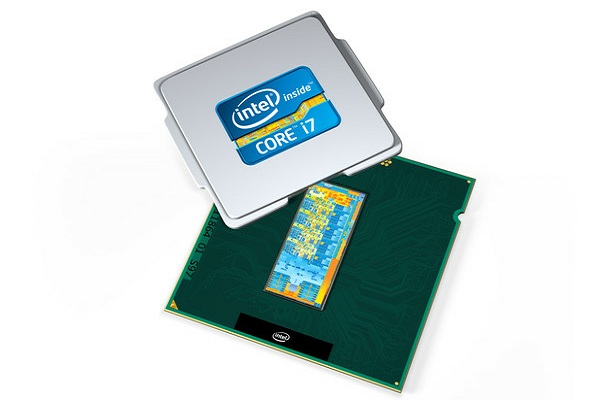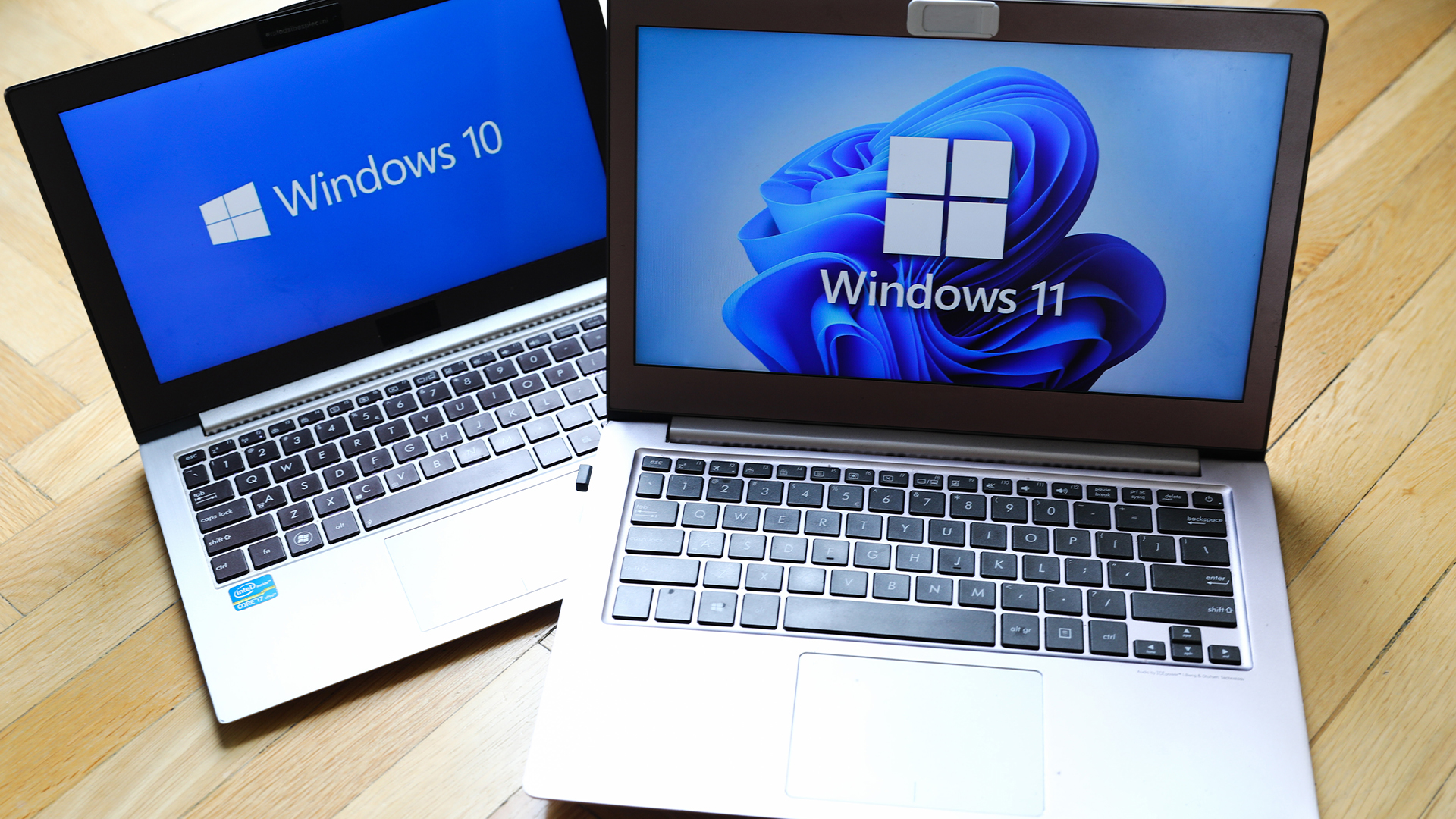Intel Ivy Bridge vs AMD Trinity head-to-head review
We compare the design, performance, business features, availability and price to see which chipset you should invest in.

Intel has been the market leader for sometime and Ivy Bridge is the CPU industry's first range of 22nm processors. This makes it 10nm smaller than Trinity, and this comes with a range of architectural benefits - not least improved efficiency and reduced heat, which should primarily provide better battery life in laptops.
Ivy Bridge also includes an upgraded graphics core, with the HD 2500 and HD 4000 chips arriving across Core i3, i5 and i7 processors. The latter is the only one to debut so far, and it also supports DirectX 11 as well as AVC encoding for video work. It's an improvement on older models, although the HD 2500 core won't be able to match the levels of graphics power delivered by Trinity.
Winner : Draw - AMD's APU approach deserves plaudits and provides a more balanced chipset, but the 22nm processor from Intel is an achievement.

Ivy Bridge processors are the first to be built using the 22nm process
Results
We've tested the A10-4600M, which was supplied in an AMD-branded test machine and is a high-end Trinity chip. It's quad-core, with each core running at 2.3GHz with a maximum boost of 3.2GHz on a single core, and it's packaged with a Radeon HD 7660G graphics core - a current-generation part boasting 384 stream processors and a 497MHz core clock speed.
In our application benchmarks the A10-4600M returned an overall score of 0.58. That's reasonable, but it competes with Intel's cheaper chips: the 2.3GHz Core i3-2350M scored 0.62 in the same tests. Laptops with the high-end 2.2GHz Core i7-3610QM processor, scored a whopping 0.94 in the application benchmarks. Desktop parts are even quicker, with overclocked Ivy Bridge systems hitting 1.2 and above in those tests.
AMD claims that Trinity's real trump card is its graphics performance. Our low-quality Crysis benchmark is run at 1,366 x 768, and the Radeon HD 7660G scored 47fps in this test, and a score of 20fps in our 1,600 x 900 medium-quality test is impressive.
Sign up today and you will receive a free copy of our Future Focus 2025 report - the leading guidance on AI, cybersecurity and other IT challenges as per 700+ senior executives
Intel has responded with its HD 4000 graphics core, which is included inside every single mobile Ivy Bridge processor and seven of the firm's latest desktop chips. Its benchmark results outperform Trinity, with a score of 48fps in our Low quality test and 24fps in the Medium quality benchmark. That gives Intel the lead at the moment, but bear in mind that desktop-based Trinity parts are coming, and top-end chips will included a desktop version of that Radeon HD 7660 chipset - a part which is likely to give AMD the lead.
Winner - Intel - The high-end Core i7 Ivy Bridge processor outperforms best AMD has to offer in terms of laptops. Things may be different on the desktop side, but AMD has yet to release the high-performance Piledriver processors.
Mike Jennings has worked as a technology journalist for more than a decade and has been fascinated by computers since childhood, when he spent far too long building terrible websites. He loves desktop PCs, components, laptops and anything to do with the latest hardware.
Mike worked as a staff writer at PC Pro magazine in London for seven years, and during that time wrote for a variety of other tech titles, including Custom PC, Micro Mart and Computer Shopper. Since 2013, he’s been a freelance tech writer, and writes regularly for titles like Wired, TechRadar, Stuff, TechSpot, IT Pro, TrustedReviews and TechAdvisor. He still loves tech and covers everything from the latest business hardware and software to high-end gaming gear, and you’ll find him on plenty of sites writing reviews, features and guides on a vast range of topics.
You can email Mike at mike@mike-jennings.net, or find him on Twitter at @mikejjennings
-
 Everything you need to know about Google and Apple’s emergency zero-day patches
Everything you need to know about Google and Apple’s emergency zero-day patchesNews A serious zero-day bug was spotted in Chrome systems that impacts Apple users too, forcing both companies to issue emergency patches
-
 Ronald Richardson to lead Leaseweb’s global commercial strategy
Ronald Richardson to lead Leaseweb’s global commercial strategyNews The experienced executive has been named Leaseweb’s new CRO as the IaaS provider embarks on the next phase of its growth journey
-
 Nvidia’s Intel investment just gave it the perfect inroad to lucrative new markets
Nvidia’s Intel investment just gave it the perfect inroad to lucrative new marketsNews Nvidia looks set to branch out into lucrative new markets following its $5 billion investment in Intel.
-
 Framework Desktop review: Modular design and ferocious AMD performance
Framework Desktop review: Modular design and ferocious AMD performanceReviews AMD's Ryzen Max CPUs debut in Framework's impressive modular self-build small-form desktop PC
-
 The US government's Intel deal explained
The US government's Intel deal explainedNews The US government has taken a 10% stake in Intel – but what exactly does the deal mean for the ailing chipmaker?
-
 US government could take stake in Intel as chip giant's woes continue
US government could take stake in Intel as chip giant's woes continueNews The move would see increased support for Intel’s manufacturing operations
-
 Dell says Windows 11 migration is a prime opportunity to overhaul ageing PC fleets – and AI devices are in the spotlight
Dell says Windows 11 migration is a prime opportunity to overhaul ageing PC fleets – and AI devices are in the spotlightNews The shift to Windows 11 means IT leaders can ditch old tech and get their hands on AI PCs
-
 AMD chief exec Lisa Su says its new Helios AI rack is a 'game changer' for enterprises ramping up inference – here's why
AMD chief exec Lisa Su says its new Helios AI rack is a 'game changer' for enterprises ramping up inference – here's whyNews The integrated hardware offering will feature upcoming AMD chips and networking cards
-
 AMD Advancing AI 2025: All the latest news and updates from San Jose
AMD Advancing AI 2025: All the latest news and updates from San JoseFollow all the news and updates live from AMD's latest Advancing AI conference
-
 What enterprises need to be Windows 11 ready
What enterprises need to be Windows 11 readySupported Hardware purchasing will play a key role in delivering success during the Windows 11 migration rush
